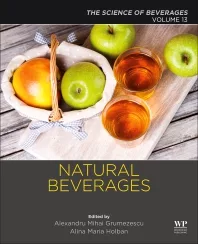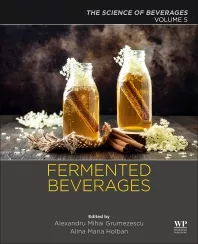Sweeteners help companies cut back
Natural, artificial and blended solutions reduce calories, costs
Whether it’s to enhance flavor profiles, reduce calories or to mask the off-notes of added vitamins and minerals, beverage manufacturers continue to turn to sweeteners to help produce products that appeal to consumers’ taste preferences. Food and beverages account for nearly 58 percent of the sugar volume used annually in the United States, according to Rockville, Md.-based market research firm Packaged Facts’ report, “Sugar, Sugar Substitute and Sweetener Trends,” published in September 2011.
According to data released in January by the Centers for Disease Control and Prevention (CDC), Atlanta, nearly 36 percent of U.S. adults were obese from 2009 to 2010. To combat this problem, the CDC encourages the U.S. population to live an active, healthy lifestyle by exercising regularly, eating fruits and vegetables as well as reducing caloric intake.
“Consumers are ever more aware of their health and wellness,” says Ihab Bishay, senior director of business development and application innovation with Ajinomoto North America, Fort Lee, N.J. “With the worldwide obesity epidemic and the other health issues featured prominently in the media, consumers are looking for their foods and beverages to be healthier than before. This includes reduced calories, carbohydrates and fats as well as added benefits, such as vitamins, antioxidants, etc.”
Keeping a low profile
In addition to providing low-calorie options, beverage-makers also must keep taste front-of-mind when formulating new beverages.
“One of the top consumer trends affecting sweeteners in the beverage industry is related to cutting calories, but preserving taste,” says Mary Lynne Shafter, beverage strategy and business development manager with Ingredion, Westchester, Ill., formerly Corn Products International. “According to the 2011 U.S. Trend Study by HealthFocus International, consumers prefer low-sugar to sugar-free [products].”
To keep up with the consumer demand, Shafter adds that beverage manufacturers are seeking low-calorie options that match the taste and texture profiles of full-sugar products. For beverage-makers in particular, the reduced-sugar or low-sugar product preference mentioned in the HealthFocus study has seen increased exposure.
“Today, the beverage industry is segmented into two areas: zero-calorie ‘diet’ beverages and full-calorie ‘regular’ beverages,” Bishay says. “On the horizon for the beverage industry is a full spectrum of beverage solutions from zero-calorie beverages to full-calorie beverages with caloric points in between, all meeting the demands of the consumer for good-tasting refreshment as well as targeted functionality.”
Although mid-calorie points can be applied to all facets of the beverage industry, the carbonated soft drink (CSD) category has made a splash with reduced-calorie releases as of late. Earlier this year, PepsiCo, Purchase, N.Y., nationally launched Pepsi Next, a mid-calorie CSD developed using the company’s proprietary sweetener technology. Dr Pepper Snapple Group (DPS), Plano, Texas, also announced that after the successful launch of its 10-calorie brand, Dr Pepper Ten, it would expand the platform to several core brands including 7UP, Sunkist, RC Cola and A&W.
High-intensity sweeteners (HIS) also have crossed over into the energy drink and shot category as well as the still drinks market, which has seen an increase in blends using multiple HIS ingredients as well as sweetener combinations featuring high fructose corn syrup (HFCS), says John Curry, president with Sweetener Solutions LLC, Pooler, Ga. He also notes the emergence of sugar-sweetened “retro” CSDs, although little sales volume is available to determine their performance.
Sweetener Solutions also has seen increased use of multiple sweeteners in portion-packed and batch-specific customer recipes for ease-of-use and accuracy during production, Curry says. For the last 10 years, the company has been developing a broad range of HIS blends to promote better flavor profiles.
“Each HIS has its own flavor nuances, i.e., aftertastes of bitter, metallic or even sweetness linger; however, we have solved many of those issues with some of our off-the-shelf multiple HIS blends,” he says.
Some of Sweetener Solutions’ blends include SucraSweet HIS 600, SucraSweet Plus, Maltotame and TriBlend. Its blends utilize all HIS options, such as combinations of acesulfame potassium, aspartame, neotame, saccharin and sucralose, Curry adds.
Although reduced-calorie options have expanded their presence in CSDs, juice and juice drinks, and additional beverage categories, consumers also are looking for zero-calorie options.
In addition to its zero-calorie Sunett, an acesulfame potassium sweetener that is 200 times sweeter than sugar, Celanese Corp. subsidiary Nutrinova, Sulzbach, Germany, developed a new platform this year that does not require the additional blending of sweeteners, the company says. Sunett and many other acesulfame potassium ingredients often are blended in large percentages, says Diana Peninger, general manager with Nutrinova. However, Sunsation, its new sweetening system, addresses consumer needs such as taste improvement, the taste gap of current low-calorie products, and the sugar-like taste profiles that beverage-makers are seeking without the use of additional blending, she adds.
“Our new Sunsation is a product that is a standalone; it’s a product that can be used in any kind of beverage application and by itself provides the sweetness required for any of these formulations,” she says.
Sunsation’s latest product under the new platform is Sunett-SL.
Beverage-makers also continue to turn to aspartame as both a standalone and blended sweetener.
“Because of its great taste and acceptance by consumers, the U.S.’s most successful products use aspartame as either the sole sweetener or blended with other sweeteners,” Ajinomoto’s Bishay says. “As a matter of fact, the Top 13 diet beverages in the U.S. all use aspartame as their primary sweetener, with five of the Top 7 sweetened with 100 percent aspartame.”
To address the growing interest in aspartame, Ajinomoto is developing two new sweeteners. Its Advantame product is a sweetener and flavor enhancer that is currently approved only as a flavor enhancer and is 20,000-times sweeter than sugar, it says.
“Advantame will be able to replace a portion of the sugar and calories in beverages while maintaining the same great taste or enhancing the flavor of the beverage while reducing cost,” he says.
Nutritive sweeteners
The U.S. sweetener market is the largest and most diverse in the world, according to the U.S. Department of Agriculture as cited in Packaged Facts’ “Sugar, Sugar Substitute and Sweetener Trends” report. It also highlights that Americans are the largest consumers of sweeteners, including HFCS.
Although no-calorie, non-nutritive sweeteners remain popular in U.S. products, consumers still have a fondness for nutritive sweeteners that contain calories and carbohydrates. In addition to sugar, beverage manufacturers are incorporating a wide range of nutritive sweeteners including agave syrup, molasses and honey.
“Honey is popular with those seeking a natural sweetener; some feel that its small amount of naturally occurring vitamins and minerals make it a healthier option than sugar, and it can often be obtained as a locally produced product,” Packaged Facts reports.
Among the most commonly used of the nutritive sweeteners is HFCS.
“HFCS is a versatile, functional, price-competitive sweetener that is a highly prized ingredient in many beverage applications,” says Audrae Erickson, president of the Corn Refiners Association, Washington, D.C. “Beverage manufacturers need a sweetener that is easy to transport and incorporate into formulations. An important functional difference between HFCS and sugar is its physical form. HFCS is a syrup that can be easily pumped from delivery vehicles to storage and mixing tanks.”
Erickson says that in addition to shelf stability and flavor enhancement, HFCS also can offer beverage-makers a cost-effective sweetener.
“One of the challenges beverage manufacturers face is the cost of ingredients,” she says. “High fructose corn syrup’s introduction into the food supply was intended, in part, to overcome periodic shortages in sugar availability and resulting price increases. As an ingredient made from corn — a dependable, renewable and abundant crop — HFCS continues to offer significant price advantages while delivering exceptional functionality in beverage products.”
Corn-based sweeteners, including crystalline fructose, also provide a variety of options that can be incorporated in low-calorie beverages.
“Crystalline fructose is the sweetest of all the corn sweeteners and can be used in reduced-calorie beverages because less is required to produce the desired flavor,” Erickson says.
Polyols also offer beverage-makers a number of low-calorie sweeteners that are made from corn, she adds. The group includes erythritol, maltitol, mannitol, sorbitol and xylitol.
“These sweeteners have fewer calories than sugar, do not promote tooth decay and elicit a low glycemic response, which makes them a useful alternative to sugars in many beverages as well as important ingredients in drinks formulated for diabetics,” Erickson says.
Natural alternatives
Keeping consumer trends in mind, beverage-makers also are formulating products that feature natural ingredients, including sweeteners.
“Consumers have started to make informative decisions on what they are consuming,” says Vince Cavallini, senior beverage scientist with Cargill Inc., Minneapolis. “One of the biggest trends right now is natural sweetness along with calorie reduction.”
Cavallini adds that it is important for these natural solutions to taste good and for beverage-makers to understand the different complexities of each sweetener.
“The gold standard in sweeteners is sugar,” he says. “Of course not all sweeteners are equal. Honey is different from agave syrup, which is different from sugar.”
Because of the calories and carbohydrates found in some of these sweeteners that can be labeled as natural, beverage formulators have been working to offer solutions that are not only natural, but also zero- or low-calorie. Among those solutions are some polyols such as erythritol, which can be used in blended sweetener solutions.
“Natural, zero-calorie sweeteners are starting to gain momentum in the industry,” Cavallini says. “Blending these natural sweeteners with polyols like erythritol and a small amount of sugar can help you develop a great-tasting beverage that has significantly reduced calories.”
He adds that last year Cargill launched TasteWise, a new approach and new technology that is designed for the development of reduced-calorie beverages.
“TasteWise reduced-calorie solutions use Cargill’s patent-pending technology, application capabilities and ingredients to enable beverage manufacturers to deliver better-tasting, reduced-calorie products to consumers by optimizing the balance of texture, sweetness and flavor,” Cavallini says.
Another emerging sweetener is the use of monk fruit. Tate & Lyle, Decatur, Ill., in partnership with New Zealand-based BioVittoria Ltd. offers a monk fruit-derived sweetener. Marketed as Purefruit, the sweetener is a calorie-free ingredient that is fruit-based. Purefruit’s base in monk fruit allows products to be labeled as “sweetened with fruit extract,” the company says.
Tate & Lyle also provides a lineup of sweeteners, including saccharin, cyclamates, aspartame, sucralose, crystalline fructose and a family of corn syrups that can be formulated into a range of applications.
More sweetener suppliers also are offering stevia extracts, which were approved for use as natural solutions in food and beverage products by the U.S. Food and Drug Administration in 2008.
“To respond to the consumer demand, many beverage manufacturers are looking to make the switch to natural products and reduce the calorie content of their beverages,” says James Kempland, vice president of marketing at Sweet Green Fields, Bellingham, Wash. “A great solution to this is blending stevia and sugar to create a beverage with less than half the calories without sacrificing the taste.”
Sweet Green Fields offers different levels of high-purity extracts, including AltesseStevia, OptesseStevia HPS, OptesseStevia HPX and GreenesseStevia.
Whether it’s wholly or only partly replacing sugar, Kempland says stevia has successfully been incorporated in a range of beverage categories such as CSDs, fruit juices and dairy products.
“Sweet Green Fields is a big proponent of what we refer to as the ‘right-calorie’ segment,” he says. “By blending sugar and stevia, beverage manufacturers will be able to create great-tasting products with less than half the calories. This fills the currently unmet market need for those who enjoy the flavor of the full-calorie product but not the caloric cost, as well as providing a healthier alternative at a time when more than 30 percent of U.S. adults are overweight.”
Incorporating stevia extracts in beverages also can be cost effective, notes Jason Hecker, vice president of global marketing and innovation for PureCircle Ltd., Oak Brook, Ill.
“Beverage-makers are looking to meet consumer desire for more natural, great-tasting, healthier options, but also looking for sweeteners that can satisfy their business needs,” Hecker says. “Stevia is a solution for both. Our natural, zero-calorie stevia ingredients are competitively priced with other natural sweeteners and can consistently meet the highest standard of quality at a mass volume scale.”
In addition to offering competitively priced solutions, PureCircle also offers a range of sweetening solutions. Its latest innovation is PureCircle Flavor NSF-02, which is designed to work with stevia and other sweeteners in food and beverages, he says.
“We recently discovered that it can be used at particular concentrations to provide significantly enhanced flavor and sweetener profiles for a more rounded sugar-like taste,” Hecker says.
Although stevia extracts have provided more natural solutions to beverage-makers, some ingredient suppliers think more options will become available when it comes to natural sweetener solutions.
“We have just scratched the surface on natural products that will be coming in the next five, 10, who knows how many years,” Nutrinova’s Peninger says. BI
Looking for a reprint of this article?
From high-res PDFs to custom plaques, order your copy today!








